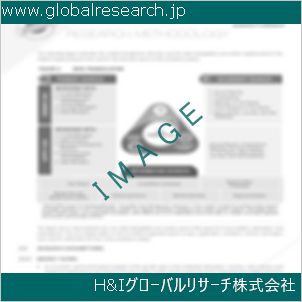Table of Contents
1 Industry Overview of TDI
1.1 Definition and Specifications of TDI
1.1.1 Definition of TDI
1.1.2 Specifications of TDI
1.2 Classification of TDI
1.3 Applications of TDI
1.3.1 Nuclear Application
1.3.2 Non-Nuclear Application
1.4 Industry Chain Structure of TDI
1.5 Industry Overview and Major Regions Status of TDI
1.5.1 Industry Overview of TDI
1.5.2 Global Major Regions Status of TDI
1.6 Industry Policy Analysis of TDI
1.7 Industry News Analysis of TDI
2 Manufacturing Cost Structure Analysis of TDI
2.1 Raw Material Suppliers and Price Analysis of TDI
2.2 Equipment Suppliers and Price Analysis of TDI
2.3 Labor Cost Analysis of TDI
2.4 Other Costs Analysis of TDI
2.5 Manufacturing Cost Structure Analysis of TDI
2.6 Manufacturing Process Analysis of TDI
3 Technical Data and Manufacturing Plants Analysis of TDI
3.1 Capacity and Commercial Production Date of Global TDI Major Manufacturers in 2023
3.2 Manufacturing Plants Distribution of Global TDI Major Manufacturers in 2023
3.3 R&D Status and Technology Source of Global TDI Major Manufacturers in 2023
3.4 Raw Materials Sources Analysis of Global TDI Major Manufacturers in 2023
4 Capacity, Production and Revenue Analysis of TDI by Regions, Types and Manufacturers
4.1 Global Capacity, Production and Revenue of TDI by Regions 2019-2024
4.2 Global and Major Regions Capacity, Production, Revenue and Growth Rate of TDI 2019-2024
4.3 Global Capacity, Production and Revenue of TDI by Types 2019-2024
4.4 Global Capacity, Production and Revenue of TDI by Manufacturers 2019-2024
5 Price, Cost, Gross and Gross Margin Analysis of TDI by Regions, Types and Manufacturers
5.1 Price, Cost, Gross and Gross Margin Analysis of TDI by Regions 2019-2024
5.2 Price, Cost, Gross and Gross Margin Analysis of TDI by Types 2019-2024
5.3 Price, Cost, Gross and Gross Margin Analysis of TDI by Manufacturers 2019-2024
6 Consumption Volume, Consumption Value and Sale Price Analysis of TDI by Regions, Types and Applications
6.1 Global Consumption Volume and Consumption Value of TDI by Regions 2019-2024
6.2 Global and Major Regions Consumption Volume, Consumption Value and Growth Rate of TDI 2019-2024
6.3 Global Consumption Volume and Consumption Value of TDI by Types 2019-2024
6.4 Global Consumption Volume and Consumption Value of TDI by Applications 2019-2024
6.5 Sale Price of TDI by Regions 2019-2024
6.6 Sale Price of TDI by Types 2019-2024
6.7 Sale Price of TDI by Applications 2019-2024
6.8 Market Share Analysis of TDI by Different Sale Price Levels
7 Supply, Import, Export and Consumption Analysis of TDI
7.1 Supply, Consumption and Gap of TDI 2019-2024
7.2 Global Capacity, Production, Price, Cost, Revenue, Supply, Import, Export and Consumption of TDI 2019-2024
7.3 USA Capacity, Production, Price, Cost, Revenue, Supply, Import, Export and Consumption of TDI 2019-2024
7.4 EU Capacity, Production, Price, Cost, Revenue, Supply, Import, Export and Consumption of TDI 2019-2024
7.5 China Capacity, Production, Price, Cost, Revenue, Supply, Import, Export and Consumption of TDI 2019-2024
7.6 Japan Capacity, Production, Price, Cost, Revenue, Supply, Import, Export and Consumption of TDI 2019-2024
8 Major Manufacturers Analysis of TDI
8.1 Manufacturer One
8.1.1 Company Profile
8.1.2 Product Picture and Specifications
8.1.2.1 Type I
8.1.2.2 Type II
8.1.2.3 Type III
8.1.3 Capacity, Production, Price, Cost, Gross and Revenue
8.1.4 Contact Information
8.2 Manufacturer Two
8.2.1 Company Profile
8.2.2 Product Picture and Specifications
8.2.2.1 Type I
8.2.2.2 Type II
8.2.2.3 Type III
8.2.3 Capacity, Production, Price, Cost, Gross and Revenue
8.2.4 Contact Information
8.3 Manufacturer Three
8.3.1 Company Profile
8.3.2 Product Picture and Specifications
8.3.2.1 Type I
8.3.2.2 Type II
8.3.2.3 Type III
8.3.3 Capacity, Production, Price, Cost, Gross and Revenue
8.3.4 Contact Information
8.4 Manufacturer Four
8.4.1 Company Profile
8.4.2 Product Picture and Specifications
8.4.2.1 Type I
8.4.2.2 Type II
8.4.2.3 Type III
8.4.3 Capacity, Production, Price, Cost, Gross and Revenue
8.4.4 Contact Information
8.5 Manufacturer Five
8.5.1 Company Profile
8.5.2 Product Picture and Specifications
8.5.2.1 Type I
8.5.2.2 Type II
8.5.2.3 Type III
8.5.3 Capacity, Production, Price, Cost, Gross and Revenue
8.5.4 Contact Information
…
9 Marketing Trader or Distributor Analysis of TDI
9.1 Marketing Channels Status of TDI
9.2 Traders or Distributors with Contact Information of TDI by Regions
9.3 Ex-work Price, Channel Price and End Buyer Price Analysis of TDI
9.4 Regional Import, Export and Trade Analysis of TDI
10 Industry Chain Analysis of TDI
10.1 Upstream Major Raw Materials Suppliers Analysis of TDI
10.1.1 Major Raw Materials Suppliers with Contact Information Analysis of TDI
10.1.2 Major Raw Materials Suppliers with Supply Volume Analysis of TDI by Regions
10.2 Upstream Major Equipment Suppliers Analysis of TDI
10.2.1 Major Equipment Suppliers with Contact Information Analysis of TDI
10.2.2 Major Equipment Suppliers with Product Pictures Analysis of TDI by Regions
10.3 Downstream Major Consumers Analysis of TDI
10.3.1 Major Consumers with Contact Information Analysis of TDI
10.3.2 Major Consumers with Consumption Volume Analysis of TDI by Regions
10.4 Supply Chain Relationship Analysis of TDI
11 Development Trend of Analysis of TDI
11.1 Capacity, Production and Revenue Forecast of TDI by Regions and Types
11.1.1 Global Capacity, Production and Revenue of TDI by Regions 2024-2029
11.1.2 Global and Major Regions Capacity, Production, Revenue and Growth Rate of TDI 2024-2029
11.1.3 Global Capacity, Production and Revenue of TDI by Types 2024-2029
11.2 Consumption Volume and Consumption Value Forecast of TDI by Regions, Types and Applications
11.2.1 Global Consumption Volume and Consumption Value of TDI by Regions 2024-2029
11.2.2 Global and Major Regions Consumption Volume, Consumption Value and Growth Rate of TDI 2024-2029
11.2.3 Global Consumption Volume and Consumption Value of TDI by Types 2024-2029
11.2.4 Global Consumption Volume and Consumption Value of TDI by Applications 2024-2029
11.3 Supply, Import, Export and Consumption Forecast of TDI
11.3.1 Supply, Consumption and Gap of TDI 2024-2029
11.3.2 Global Capacity, Production, Price, Cost, Revenue, Supply, Import, Export and Consumption of TDI 2024-2029
11.3.3 USA Capacity, Production, Price, Cost, Revenue, Supply, Import, Export and Consumption of TDI 2024-2029
11.3.4 EU Capacity, Production, Price, Cost, Revenue, Supply, Import, Export and Consumption of TDI 2024-2029
11.3.5 China Capacity, Production, Price, Cost, Revenue, Supply, Import, Export and Consumption of TDI 2024-2029
11.3.6 Japan Capacity, Production, Price, Cost, Revenue, Supply, Import, Export and Consumption of TDI 2024-2029
12 New Project Investment Feasibility Analysis of TDI
12.1 New Project SWOT Analysis of TDI
12.2 New Project Investment Feasibility Analysis of TDI
13 Conclusion of the Global TDI (CAS 584-84-9) Industry 2024 Market Research Report
| ※参考情報 TDI(トルエンジイソシアネート)は、有機化合物であり、化学式はC9H6N2O2です。TDIは特にポリウレタンの製造において重要な役割を果たす化学物質であり、その特性や用途は多岐にわたります。以下では、TDIの定義、特徴、種類、用途、関連技術について詳しく述べてまいります。 まず、TDIは、トルエンジイソシアネートの略で、一般的には二種の異性体、すなわち2,4-TDIと2,6-TDIの形で存在します。TDIは、以下のような特性を持つとされています。 TDIは、色無色で、わずかに甘い匂いを放つ液体です。常温では液体ですが、低温では固体として存在することもあります。また、TDIは水に対してはほとんど溶けませんが、有機溶剤には良く溶けるという特徴があります。さらに、TDIは非常に反応性が高いため、他の化学物質と容易に反応し、ポリウレタンなどの高分子材料を形成します。このため、TDIは産業化学において非常に重要な中間体として利用されています。 TDIの種類についてですが、前述のように主に2,4-TDIと2,6-TDIという二つの異性体があります。これらは、化学構造がわずかに異なるため、それぞれ異なる性質を持ち、工業用途によって使い分けられます。一般的に、2,4-TDIは柔軟性の高いポリウレタンを製造するために多く使用され、2,6-TDIはより堅固な製品に使用されることが多いです。 TDIの用途は多岐にわたります。最も一般的な用途は、ポリウレタン発泡体の製造です。ポリウレタン発泡体は軽量で断熱性に優れているため、冷蔵庫やエアコン、家具、床材、輸送用パッケージなど、さまざまな製品に利用されています。また、自動車産業においても、シートや内装材、衝撃吸収材として広く使用されています。 さらに、TDIは塗料や接着剤、コーティング剤などの製造にも利用されます。これらの製品は、TDIをベースにしたポリウレタン樹脂を使用することで、優れた耐候性や耐薬品性を実現します。特に、建築材や電子機器、工業機械など、多くの産業における表面処理に重要な役割を果たしています。 近年、環境問題や健康への配慮から、TDIとその使用に関しても注目が集まっています。TDIそのものは、吸入や皮膚接触によって健康に悪影響を及ぼす可能性があるため、取り扱いには十分な注意が必要です。このため、個人防護具の着用や適切な換気が求められるほか、産業界ではTDIの取り扱いに関する安全基準やガイドラインが整備されています。 また、TDIを使用したポリウレタン製品のリサイクルや廃棄に関する技術も進化しています。循環型経済の観点から、TDIを使用した製品の寿命を延ばすことや、使用後の再処理技術を開発することが重要な課題となっています。これにより、環境への負荷を低減し、持続可能な社会の実現を目指す動きが広がっています。 さらに、TDIに代わる環境に優しい材料の開発も進んでいます。たとえば、バイオマスを原料としたポリウレタンや、再生可能なポリマーからの合成が注目されています。これらの新しい材料は、TDIに比べて持続可能性が高く、環境への影響を最小限に抑えることが可能です。 結論として、TDIはポリウレタンの製造において極めて重要な化学物質であり、さまざまな産業で幅広く利用されています。その特性や種類、用途、関連技術は、多くの人々の日常生活に影響を与えているといえるでしょう。しかし、TDIの取り扱いには十分な注意が必要であり、環境への配慮も含めてさらなる進展が求められています。今後も、TDIやポリウレタンに関連する研究開発が続く中で、その利用方法が多様化し、持続可能な社会の実現に貢献していくことが期待されます。 |
❖ 免責事項 ❖
http://www.globalresearch.jp/disclaimer












